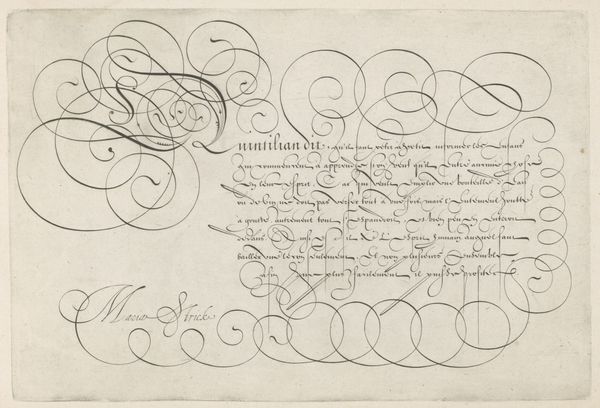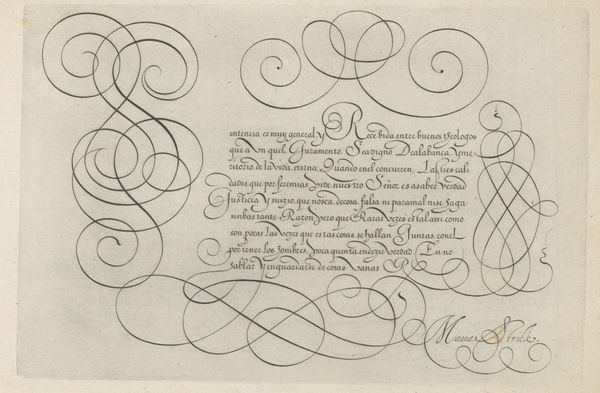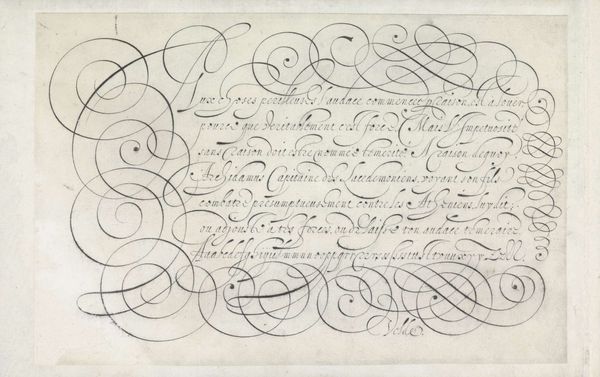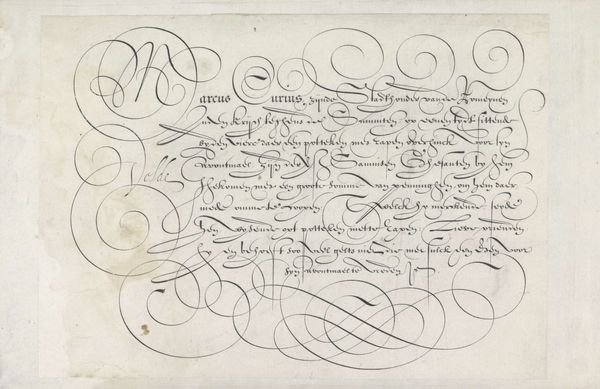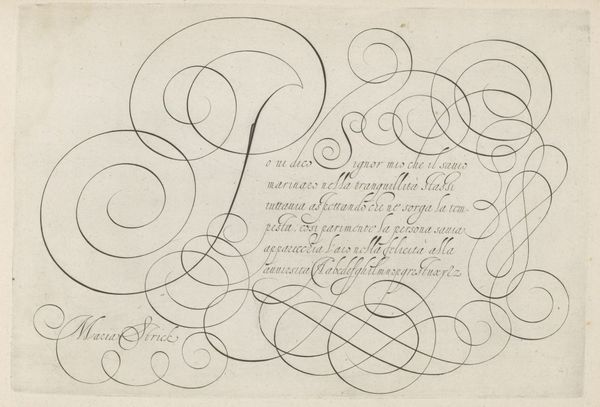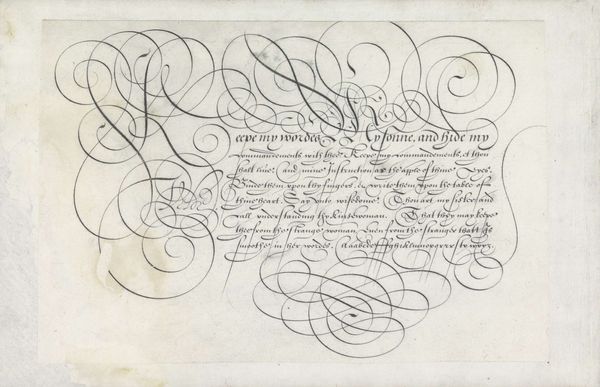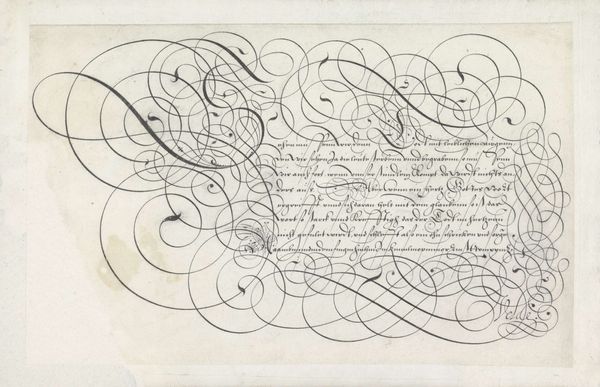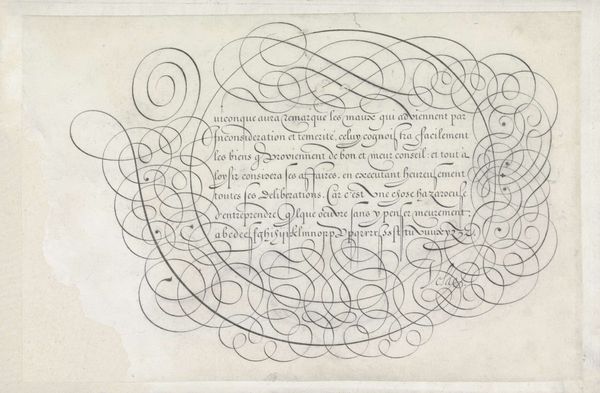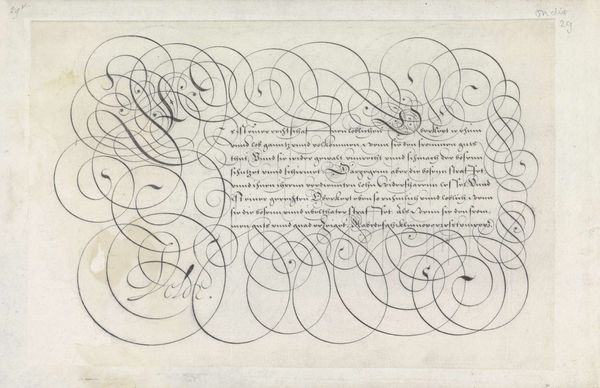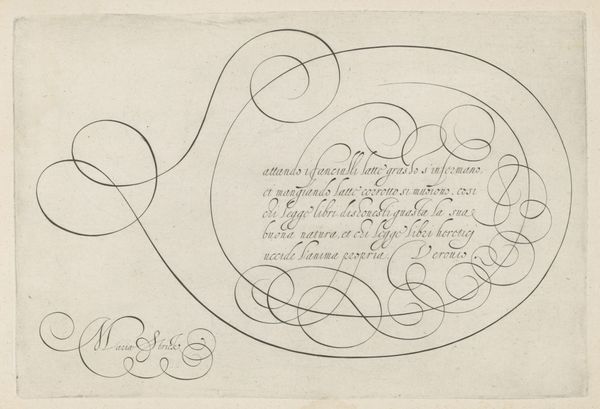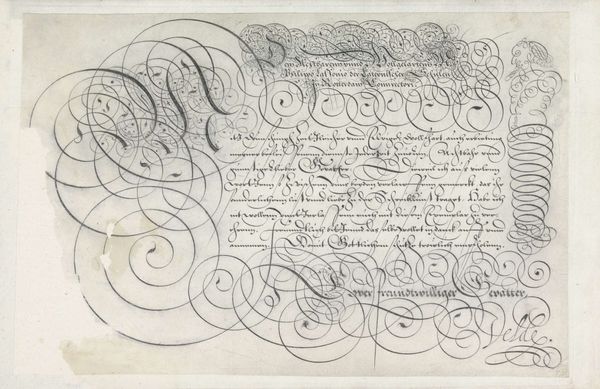
drawing, print, paper, ink, engraving
#
drawing
#
dutch-golden-age
# print
#
paper
#
ink
#
engraving
#
calligraphy
Dimensions: height 199 mm, width 297 mm
Copyright: Rijks Museum: Open Domain
Curator: Here we have a Dutch Golden Age calligraphy, "Schrijfvoorbeeld met kapitaal P," or Writing Sample with a Capital P created in 1618 by Hans Strick. It's an engraving in ink on paper, currently residing here at the Rijksmuseum. Editor: It's visually quite striking. The looping forms remind me of intricate metalwork, something baroque and almost weightless. What's most interesting to you, formally? Curator: Well, consider how Strick uses line, first and foremost. The thickness varies drastically, creating a dynamic interplay between weight and airiness. Semiotically, each flourish conveys elegance and mastery. And how the artist presents the illusion of overlapping curves—the 'P' a structural linchpin. Editor: I find it interesting that he would do such a thing: at the time, calligraphy was essential for legal and political documents. Displaying such artistry implies a social status, and perhaps alludes to a cultural sophistication valued by the Dutch elite. But I must ask, how well does it work as a demonstration of legibility? Curator: Legibility, in the purely utilitarian sense, is secondary here. It transcends mere communication, moving towards pure visual pleasure. Each stroke reflects the ideals of balance and harmony that resonated throughout 17th-century Dutch art. Observe the contrast, too, of the organic letterforms alongside the very calculated execution of curves. Editor: Yet I see that period as one where commerce and governance relied heavily on these skills. How readily would viewers from the Golden Age distinguish a purely artistic expression from a sample meant to display functionality? This makes me ponder what social pressures and influences were upon Strick as he completed the work. Curator: Certainly, those questions inform the historical context. However, as an exercise in formal dexterity, consider the composition—how it guides the eye, encouraging prolonged engagement beyond simple comprehension. The very material qualities--the sheen of ink upon the page and overall craftsmanship elevates a simple writing exercise to something lasting. Editor: Agreed, looking beyond functionality allows us to consider its function: an exercise of virtuosity. A calligraphic caprice if you will. Thank you, that certainly highlights it differently. Curator: A worthwhile perspective indeed. The dialogue between artistic form and its broader cultural role—always enriching!
Comments
No comments
Be the first to comment and join the conversation on the ultimate creative platform.
